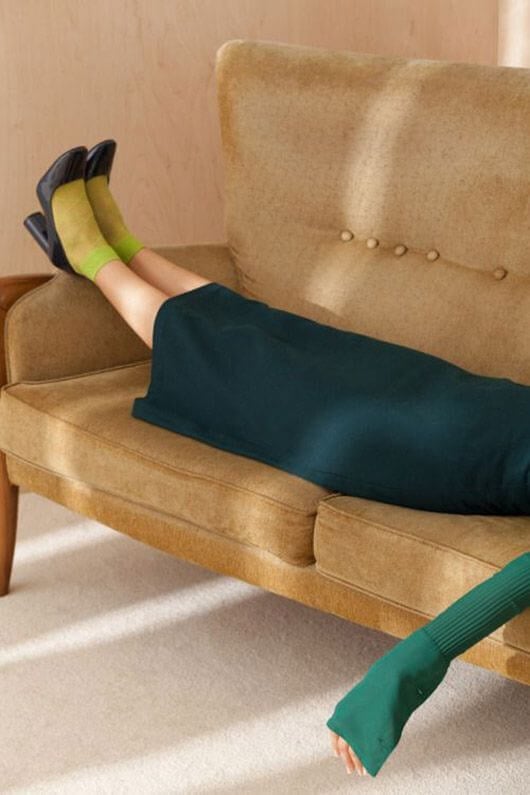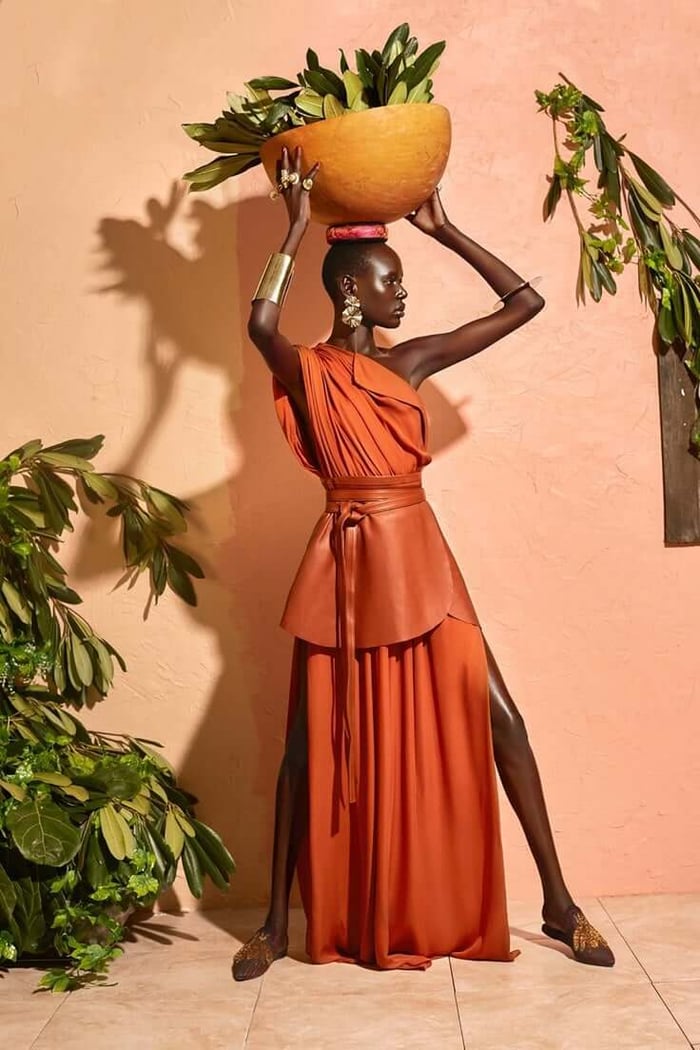The Psychology of Fashion: Why Our Clothes Say More Than We Think
Table of Contents
- Why We Wear What We Wear: The Psychology Behind Clothing Choices
- How Fashion Affects Our Mood and Emotions
- Color Psychology in Fashion: More Than Just Aesthetic
- Fashion and Cultural Identity
- How Fashion Shapes Our Identity and Social Perception
- Final Thoughts: Why Fashion Psychology Matters
- FAQ: Psychology of fashion
Have you ever wondered why you choose certain outfits over others? Or why wearing a particular color makes you feel instantly confident? The answer lies in the psychology of fashion, an often-overlooked factor that plays a huge role in how we dress, how we feel, and how others see us. From subconscious identity signals to mood-boosting colors, fashion goes far beyond aesthetics.
In this guide, we’ll explore how clothing impacts our identity, emotions, and social interactions, revealing why what we wear matters more than we think.

Why We Wear What We Wear: The Psychology Behind Clothing Choices
Our clothing choices are rarely random. In fact, they’re often driven by internal factors like personality, emotions, and even cultural influences. Understanding these motivations can help you shop and dress more intentionally.
1. Clothing and Self-Identity
We use clothing to project our identity to the world. Fashion acts like a personal billboard, showing others who we are, or who we want to become:
People drawn to minimalist clothing may value simplicity and organization.
Those wearing bold prints and bright colors may express creativity and extroversion.
Choosing luxury or designer brands can signal status, success, or aspiration.
This connection between clothing and self-image is called enclothed cognition, where what you wear affects how you perceive yourself, not just how others perceive you.
2. Fashion as Social Communication
Fashion also serves as a tool for social belonging, or rebellion:
Many people dress to align with a particular community or trend, like streetwear enthusiasts or vintage fashion lovers.
On the flip side, intentionally unconventional outfits can help signal independence or creativity.
At work, professional clothing conveys authority and credibility, often leading to better first impressions.
In short, clothing can help us fit in, or stand out, depending on our goals.
How Fashion Affects Our Mood and Emotions
Did you know your outfit can change how you feel throughout the day? Psychologists link fashion and emotions closely, with studies showing that:
Wearing favorite colors or pieces can increase happiness.
Structured, professional outfits can enhance feelings of confidence and control.
Comfortable clothing can lower stress and boost relaxation.
This means dressing well isn’t just about appearances, it can directly influence your mental state.

Color Psychology in Fashion: More Than Just Aesthetic
Color theory plays a powerful role in the psychology of fashion. Here’s how common colors impact mood and perception:
Red: Passion, energy, power.
Blue: Trust, calmness, stability.
Black: Sophistication, authority, mystery.
Yellow: Optimism, creativity, happiness.
Choosing your outfit’s color palette consciously can help you create the impression you want, whether at work, in social settings, or even in personal moments.
Fashion and Cultural Identity
Our clothing choices are also shaped by culture:
Traditional garments like saris, kimonos, or hijabs carry deep cultural and historical significance.
Modern fashion often blends global influences, creating new hybrid styles.
Discussions about cultural appropriation highlight the importance of understanding and respecting the origins of fashion elements.
Recognizing these cultural layers can add depth to your style choices and help avoid insensitive fashion decisions.

How Fashion Shapes Our Identity and Social Perception
Fashion is much more than fabrics and cuts, it’s a language we speak without words. Every outfit we choose tells a story about who we are, or who we aspire to be. Psychologists agree that clothing plays a key role in shaping both self-identity and how others perceive us.
1. Expressing Your Personality Through Style
Whether consciously or not, people use fashion to express their inner identity:
Minimalists might gravitate toward neutral tones and clean lines.
Creative personalities often prefer bold colors or eclectic patterns.
Professionals may choose tailored pieces to signal confidence and competence.
Our wardrobes become an extension of our personalities, communicating our values and moods without us saying a word.

2. Fashion as a Social Tool
Clothing also helps us fit in, or stand out. In social psychology, this is known as enclothed cognition: the idea that what we wear affects both how others view us and how we behave ourselves.
People often adapt their style to match a specific group or subculture (e.g., streetwear fans, luxury shoppers).
Dressing in certain ways can help individuals feel more accepted within a social circle.
Conversely, choosing unconventional outfits can signal individuality and defiance.
In professional settings, dressing ‘the part’ can influence credibility and authority, reinforcing the famous saying: Dress for the job you want, not the job you have.
3. Mood and Emotional Influence
Fashion also impacts our own emotional state. Certain styles and colors can lift our mood or help us feel empowered:
Wearing bright or favorite colors can boost happiness.
Comfortable clothing enhances relaxation and self-confidence.
Dressing sharply for a meeting or event can trigger feelings of competence and control.
In essence, the act of choosing what to wear can be a form of emotional self-care.
4. Cultural Influences on Clothing Choices
Cultural norms heavily shape what we perceive as stylish or appropriate:
Traditional garments (like kimonos, saris, or abayas) hold deep cultural significance.
Global fashion trends often merge different cultural aesthetics, creating new styles.
Awareness of cultural appropriation highlights the importance of respecting the origins of certain clothing elements.
Understanding your clothing’s cultural context can deepen the personal meaning behind style choices.

Final Thoughts: Why Fashion Psychology Matters
Fashion isn’t superficial, it’s a language of identity, emotion, and connection. By understanding the psychology of fashion, you can make more intentional style decisions that reflect who you are and how you want to feel. Remember:
Clothes shape both self-image and public perception.
Color and texture affect your mood.
Fashion communicates your cultural and personal story.
So next time you open your wardrobe, think beyond trends. Your clothing choices are more meaningful than you might realize.
FAQ: Psychology of fashion
What is the psychology of fashion?
The psychology of fashion studies how clothing choices influence and reflect our emotions, identity, social interactions, and perception by others. It explores the connection between style, behavior, and self-expression.
How does fashion affect mood and confidence?
Clothing can significantly impact how we feel. Wearing outfits that reflect personal style or fit the occasion can boost confidence, improve mood, and even influence how others respond to us.
Why do people follow fashion trends from a psychological perspective?
Following trends can fulfill social needs, signal status, and help individuals feel part of a community. It can also satisfy the desire for novelty, creativity, and self-expression.
Can understanding fashion psychology improve personal style?
Yes, by recognizing how clothes affect emotions and social perception, individuals can make intentional choices that align with their identity, goals, and lifestyle while enhancing confidence and self-image.
How would you rate this article:
Related Articles
- Top 8 Uwear AI Alternatives for E-commerce Fashion Imaging
- How to Style Oversized Blazers: 5 Chic Outfit Ideas
- How to Stay Stylish on a Budget: Fashion Shopping Tips for the Savvy Shopper
- The 10 Best Fashion e-Commerce Trends for 2025
- Best Lighting for Product Photography: How to Capture Perfect Shots
- 8 Best AI Video Editing Tools Transforming the Future of Video Production
- Machine Learning Image Enhancement: How AI is Transforming Image Quality and Clarity
- How AI Is Shaping the Future of Kids’ Fashion
- How to Use AI in Ecommerce: Boost Your Sales and Optimize Customer Experience
- The Best Autumn Outfit Ideas for This Season
